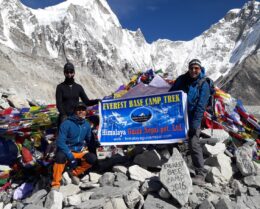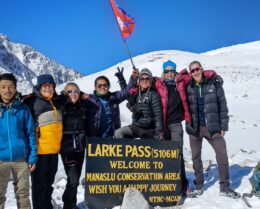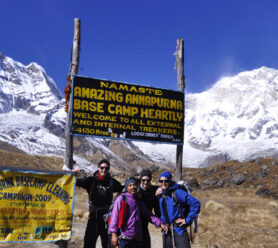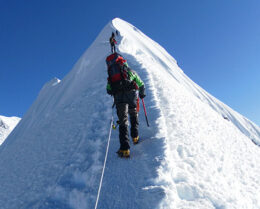Cho la Pass Trek – Trekking in the Stunning Everest Region of Nepal
UPDATED ON 10 May, 2023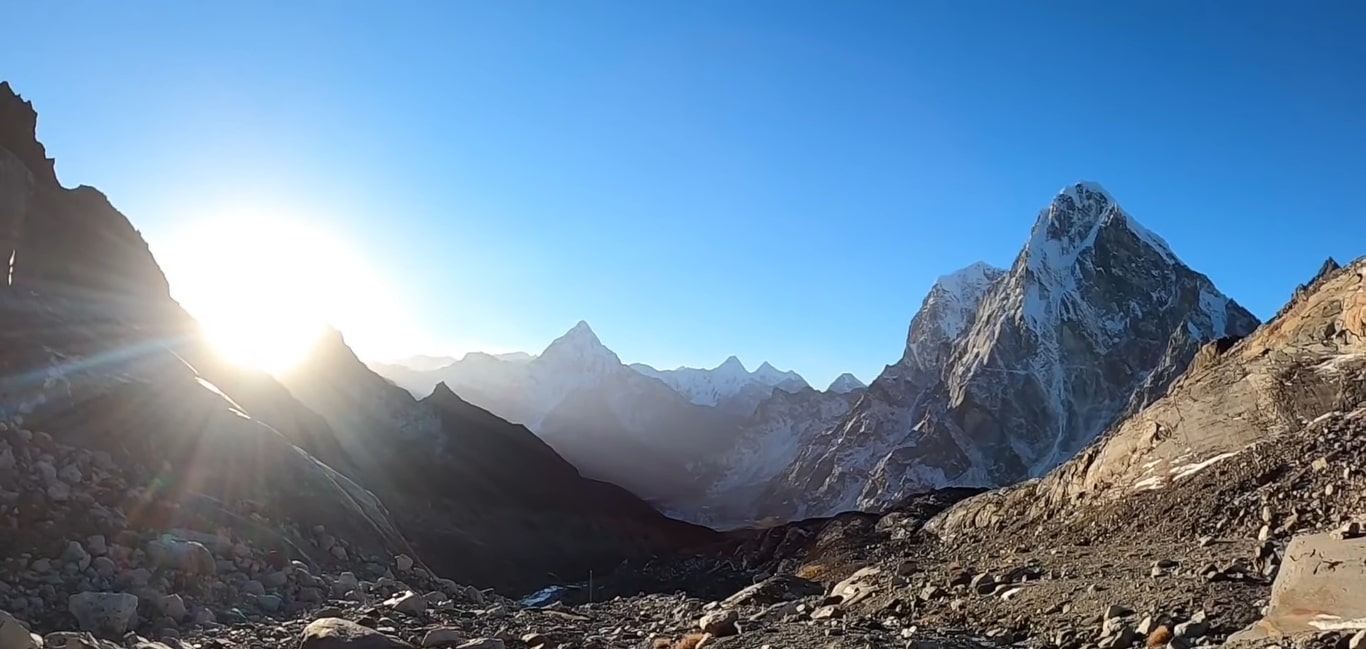
The Cho la Pass trek is one of the most thrilling treks in the Everest region of Nepal. The trek takes you to some of the most breathtaking mountain views in the world, including Mount Everest, Cho Oyu, and Gokyo Ri. The trek is challenging, and it requires a good level of physical fitness and mental preparation. However, the reward is worth the effort, as you get to explore the stunning landscapes of the Sagarmatha National Park, which is a UNESCO World Heritage site.
In this blog, we’ll take a closer look at the Cho la Pass trek, including its highlights, challenges, and what you can expect along the way.
Arrival in Kathmandu
The Chola Pass trek starts with your arrival in Kathmandu, the capital city of Nepal. Upon arrival, you’ll be greeted by the sights and sounds of this bustling city. Kathmandu is a city rich in culture and history, and it’s worth taking some time to explore before you start your trek.
One of the best ways to get a feel for the city is by taking a city tour. A city tour will take you to some of the most important historical and cultural sites in Kathmandu, including the Swayambhunath Stupa (also known as the Monkey Temple), the Pashupatinath Temple, and the Boudhanath Stupa.
After exploring the city, you’ll need to take a domestic flight to Lukla, the starting point of your Cho la Pass trek.
Trek to Phakding
The first day of your Cho la Pass trek will take you from Lukla to Phakding. The trek is relatively easy and takes about three to four hours as you walk through a beautiful landscape of lush forests, small villages, and prayer flags.
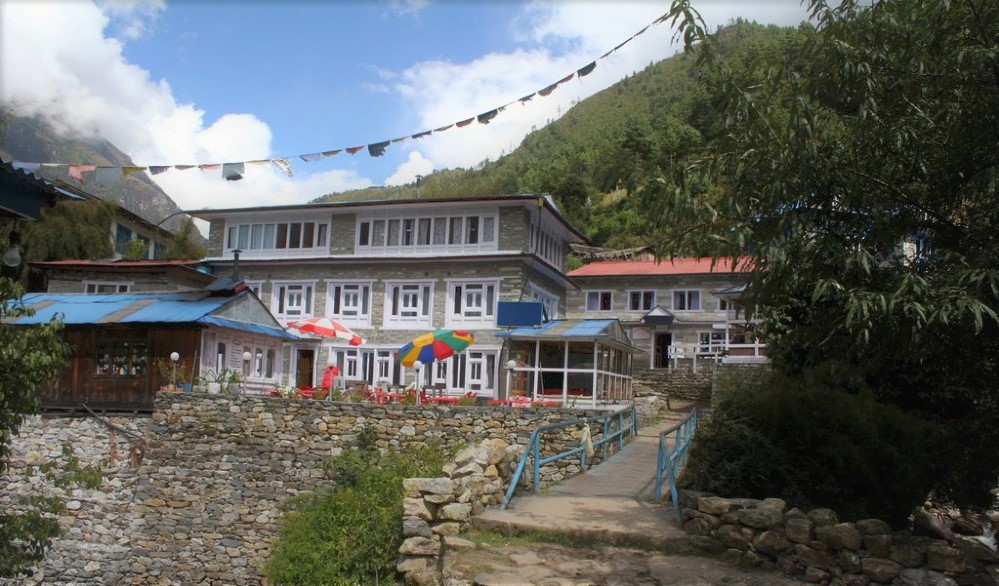
Once you arrive, a little settlement called Phakding awaits you besides the Dudh Koshi River. This is a great place to spend your first night on the trek, offering stunning mountain views and a chance to get used to the high altitude.
Trek to Namche Bazaar
The second day of your trek will take you to Namche Bazaar, one of the most important towns in the Everest region. The trek is challenging, and it will take about six to seven hours to complete. You’ll be climbing up steep trails, crossing suspension bridges, and walking through dense forests.
Namche Bazaar is a bustling town situated at an altitude of 3,440 meters. It’s a great place to acclimatize and prepare for the rest of your trek. The town has plenty of tea houses, restaurants, and shops, where you can stock up on supplies and gear.
Acclimatization Day in Namche Bazaar
On the third day of your trek, you’ll spend the day in Namche Bazaar, acclimatizing to the high altitude. This is an essential step to avoid altitude sickness, which can be dangerous and even life-threatening.
Furthermore, there are plenty of things to do in Namche Bazaar. You can explore the town’s markets, visit the Everest View Hotel, and take a short hike to the nearby Khumjung village.
Trek to Tengboche
The fourth day of your trek will take you to Tengboche, a small village situated at an altitude of 3,870 meters. The trek is relatively easy, and it will take about five to six hours to complete. You’ll be walking through a beautiful landscape of rhododendron forests, small villages, and prayer flags.
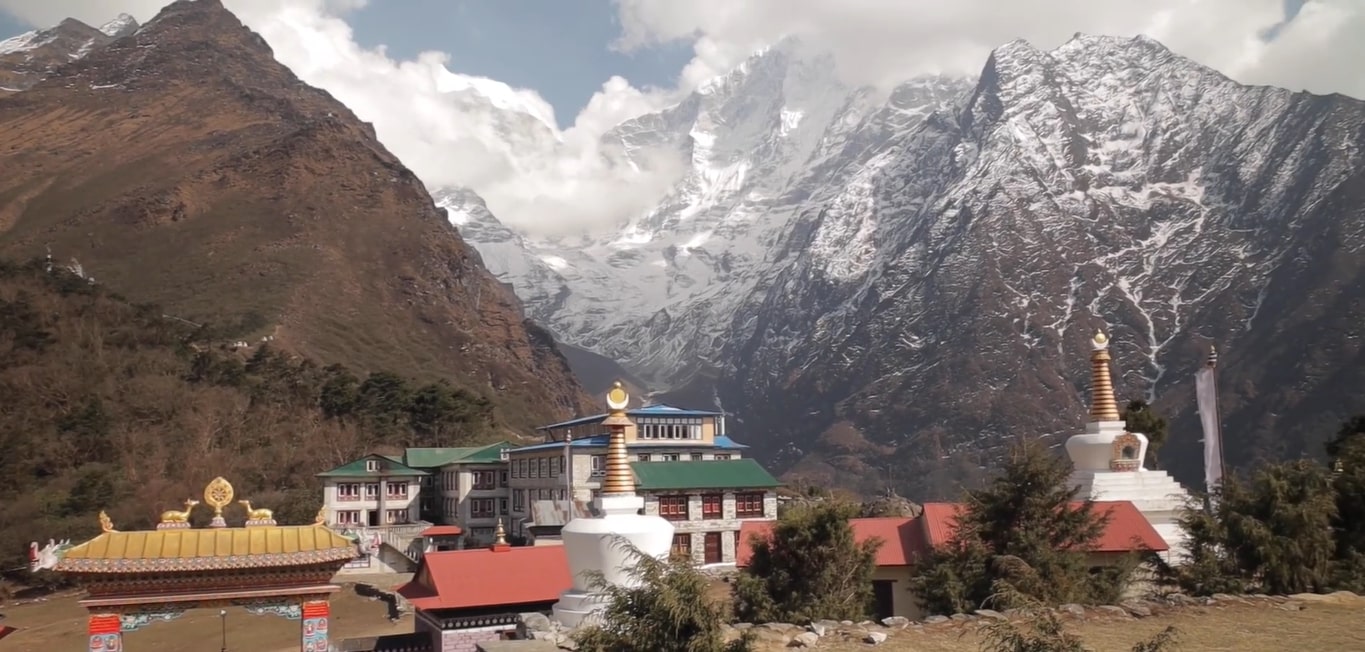
Tengboche is home to one of the most important monasteries in the Everest region, the Tengboche Monastery. The monastery offers stunning views of Mount Everest and the surrounding peaks. It’s also a great place to learn about the local Sherpa culture and traditions.
Trek to Dingboche
The fifth day of your trek will take you to Dingboche, a small village situated at an altitude of 4,410 meters. Although it is a challenging trek that takes about six to seven hours to complete, you’ll be walking through a landscape of high-altitude terrain, rocky hills, and spectacular mountain views.
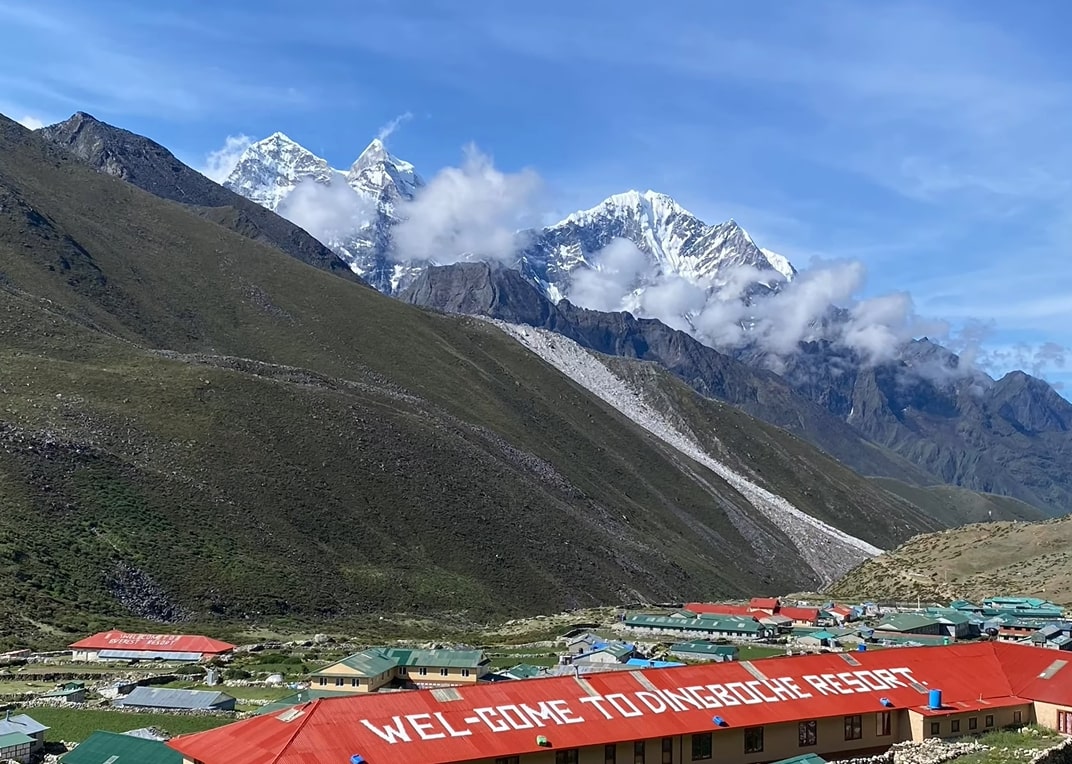
Upon arrival, Dingboche is a great place to acclimatize to the high altitude. The village is surrounded by stunning mountain peaks, including Ama Dablam, Lhotse, and Nuptse.
It’s also a great place to take a day hike to Nagarjun Hill or Chukkung Ri, which offers some of the best views of the surrounding mountains.
Acclimatization Day in Dingboche
On the sixth day of your trek, you’ll spend the day in Dingboche, acclimatizing to the high altitude. Consequently, it’s important to take a rest day to allow your body to adjust to the altitude and avoid altitude sickness.
Furthermore, there are plenty of things to do in Dingboche. For instance, you can explore the village, take a short hike to the nearby Nagarjun Hill or Chukkung Ri, or simply relax and enjoy the stunning mountain views.
Trek to Lobuche
The seventh day of your trek will take you to Lobuche, a small village situated at an altitude of 4,940 meters. Although the trek is challenging and takes about six to seven hours to complete, you’ll be walking through a landscape of high-altitude terrain, rocky hills, and spectacular mountain views.

Once you reach Lobuche, it’s a great place to stay before heading to Gorak Shep and Everest Base Camp. The village is surrounded by stunning mountain peaks, including Pumori, Nuptse, and Lingtren. Taking a rest day in Lobuche to acclimatize to the high altitude is a good idea before continuing your journey to Everest Base Camp.
Trek to Gorak Shep and Everest Base Camp
The eighth day of your Cho La Pass trek will take you to Gorak Shep and Everest Base Camp. Although it is a challenging trek that takes about seven to eight hours to complete, you’ll be walking through a landscape of high-altitude terrain, rocky hills, and spectacular mountain views.
Once you reach Gorak Shep, a small village situated at an altitude of 5,164 meters, you’re almost at the end of your journey to Everest Base Camp. From Gorak Shep, you’ll trek to Everest Base Camp, situated at an altitude of 5,364 meters. Here, you can take some photos and soak in the atmosphere of this historic site.
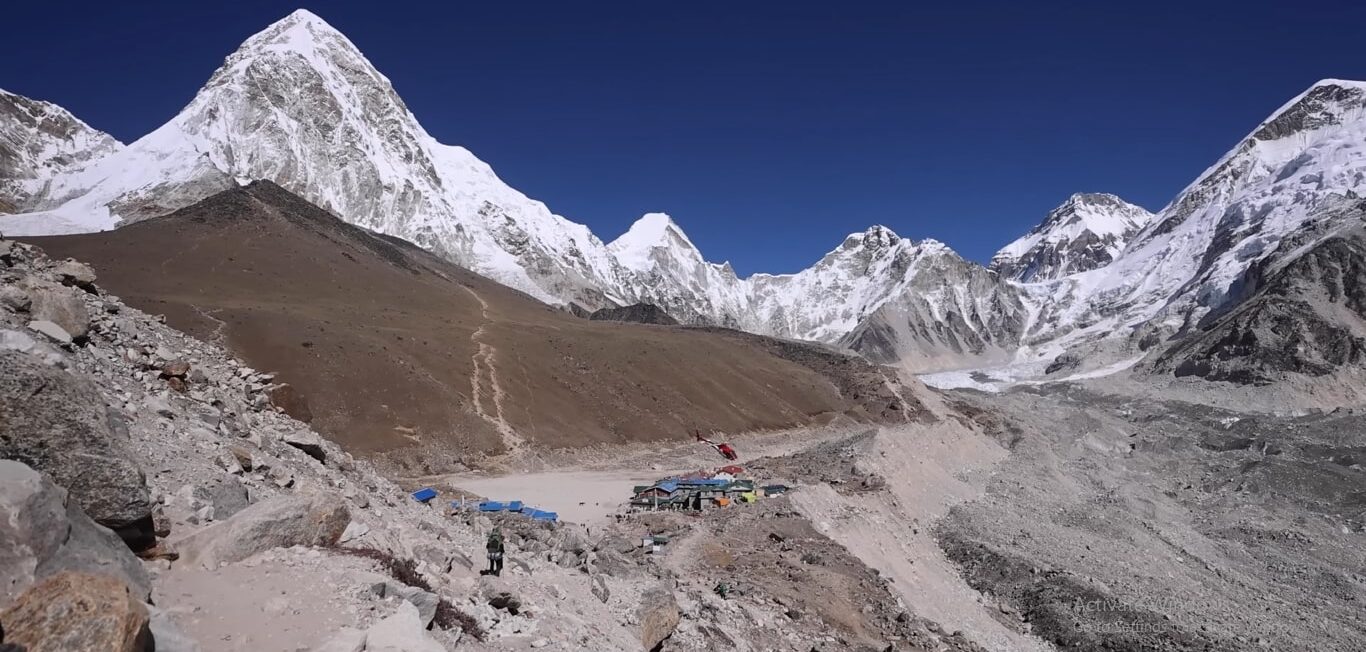
Trek to Kala Patthar and Back to Gorak Shep
The ninth day of your trek will take you to Kala Patthar, one of the most important viewpoints in the Everest region. The trek is challenging, and it will take about six to seven hours to complete. You’ll be walking through a landscape of high-altitude terrain, rocky hills, and spectacular mountain views.
Kala Patthar is situated at an altitude of 5,545 meters. It offers some of the best views of Mount Everest, Cho Oyu, and Lhotse. It’s a great place to take some photos and soak in the stunning mountain views. After visiting Kala Patthar, you’ll trek back to Gorak Shep for the night.
Crossing the Cho La Pass
The tenth day of your trek is one of the most challenging days of the trek. You’ll be crossing the Cho La Pass, which is situated at an altitude of 5,330 meters. The trek is challenging, and it will take about seven to eight hours to complete.
The Cho La Pass offers stunning views of the surrounding mountains, including Cho Oyu and Ama Dablam. It’s important to take plenty of breaks and stay hydrated during this part of the trek.
After crossing the Cho La Pass, you’ll descend to the village of Dzongla, where you’ll spend the night.
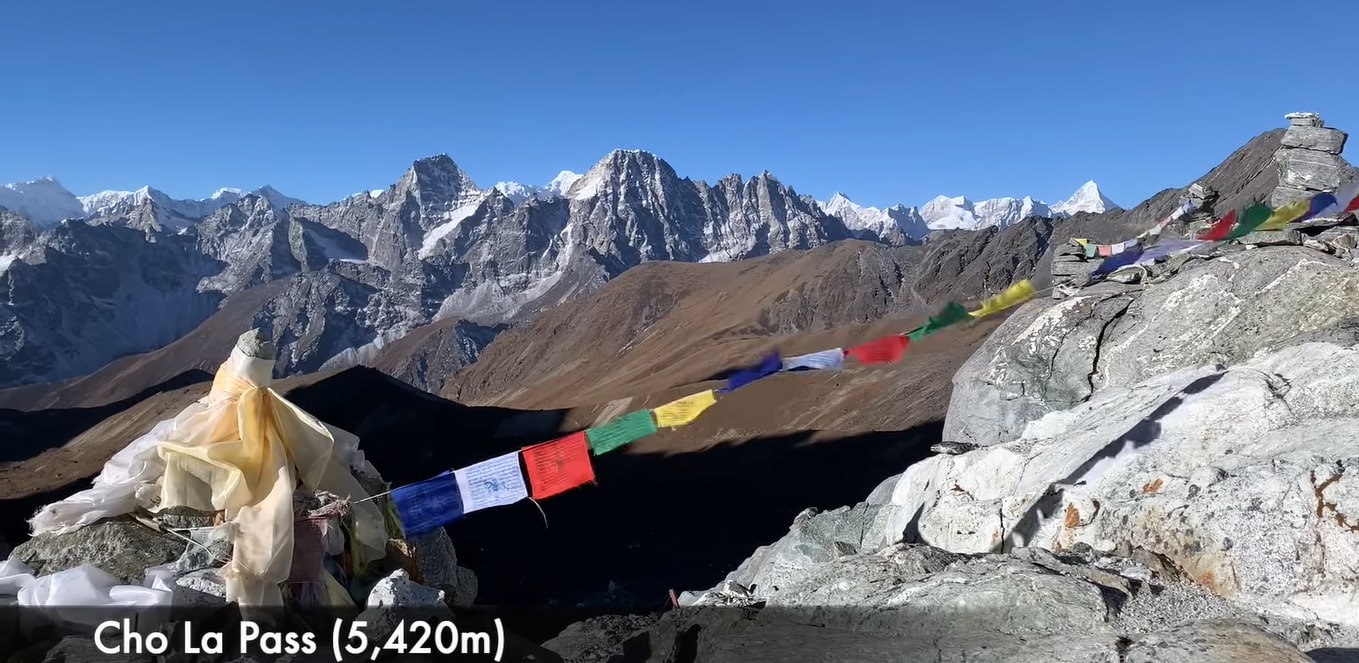
The longer Three Passes trek, which also includes the famous Everest Base Camp and the Kongma La(5535m) and Renjo La(5535m) passes, includes the Cho La Pass as a popular stop.
However, if you’re pressed for time or want a more relaxed journey, you may choose to only do the Cho La Pass trek by itself, skipping the other two passes.
Trek to Gokyo
The eleventh day of your trek will take you to Gokyo, a small village situated at an altitude of 4,790 meters. Despite being challenging, the trek will take about five to six hours to complete as you walk through a landscape of high-altitude terrain, rocky hills, and spectacular mountain views.
Moreover, Gokyo is situated next to a series of six stunning glacial lakes, known as the Gokyo Lakes. These beautiful turquoise blue lakes offer stunning views of the surrounding mountains, making it a great place to relax and soak in the stunning scenery.

Acclimatization Day in Gokyo
On the twelfth day of your trek, you’ll spend the day in Gokyo, acclimatizing to the high altitude. Therefore, it’s important to take a rest day to allow your body to adjust to the altitude and avoid altitude sickness.
Additionally, there are plenty of things to do in Gokyo. For example, you can explore the village, take a short hike to Gokyo Ri, which offers some of the best views of the surrounding mountains, or simply relax and enjoy the stunning mountain views.
Trek to Dole
The thirteenth day of your trek will take you to Dole, a small village situated at an altitude of 4,038 meters. The trek is relatively easy, and it will take about four to five hours to complete. You’ll be walking through a landscape of high-altitude terrain, rocky hills, and spectacular mountain views.
Dole is a great place to stay before heading back to Namche Bazaar. The village is surrounded by stunning mountain peaks, including Ama Dablam, Lhotse, and Nuptse.
Trek to Namche Bazaar
The fourteenth day of your trek will take you back to Namche Bazaar, a small town situated at an altitude of 3,440 meters. The trek is relatively easy, and it will take about four to five hours to complete.
Namche Bazaar is a great place to rest and relax before heading back to Lukla. The town is the main hub of the Everest region and offers plenty of amenities, including shops, cafes, and bakeries.
Trek to Lukla
The fifteenth day of your trek will take you back to Lukla, where you’ll spend the night before catching your flight back to Kathmandu. The trek is relatively easy, and it will take about three to four hours to complete.
Flight back to Kathmandu
On the sixteenth day of your trip, you’ll take a domestic flight back to Kathmandu. The flight takes about 35 minutes, and you’ll be able to enjoy stunning views of the Himalayas from the plane.
City Tour in Kathmandu
After arriving in Kathmandu, you’ll have the option to take a city tour of the capital. The city is rich in history and culture and offers plenty of things to see and do. Some of the top attractions include the Swayambhunath Stupa, Pashupatinath Temple, and Boudhanath Stupa.
Tips for a Successful Trek
Here are some tips to help you prepare for a successful trek to Everest Base Camp with Cho La Pass and Gokyo Lakes:
Train for the Trek
The trek to Everest Base Camp with Cho La Pass and Gokyo Lakes is physically demanding, and you should be in good physical condition before embarking on the trek. You should start training at least two to three months before your trek and include cardio, strength, and endurance exercises in your training routine.
Pack Wisely
Pack light and bring only the essentials. Your porter will carry up to 15kg of your gear, and you’ll only need the bare essentials during the trek. Make sure to bring warm clothes, comfortable hiking shoes, a good-quality sleeping bag, and a water bottle.
Stay Hydrated
Staying hydrated is crucial during the trek to Everest Base Camp with Cho La Pass and Gokyo Lakes. You should drink at least 3 to 4 liters of water per day to avoid dehydration.
Acclimatize Properly
Acclimatization is critical during the trek to Everest Base Camp with Cho La Pass and Gokyo Lakes. You should take rest days and acclimatize to the altitude to avoid altitude sickness.
Follow the Trekking Route
It’s important to follow the trekking route and not take shortcuts or wander off the trail. The trekking route is marked with prayer flags and signs, and you should stay on the trail to avoid getting lost.
Hire a Guide and Porter
Hiring a guide and porter is highly recommended for the trek to Everest Base Camp with Cho La Pass and Gokyo Lakes. They will help you navigate the trail, carry your gear, and provide valuable insights about the culture and history of the region.
Respect the Local Culture
The Everest region is rich in culture and tradition, and it’s important to respect the local customs and traditions. You should dress modestly, ask for permission before taking photos, and avoid littering.
What will you come across on the Cho la Pass trek?
Here are some of the things you can expect to come across during the Cho La Pass trek:
- Gokyo Lakes: a series of six glacial lakes with unique shades of blue and green
- Ngozumpa Glacier: the largest glacier in Nepal
- High-altitude landscapes with rocky terrain and barren mountainsides
- Spectacular views of the surrounding peaks, including Mount Everest, Lhotse, Nuptse, and Makalu
- Prayer flags and Chortens (Buddhist shrines) dot the landscape
- Local Sherpa villages and traditional mountain culture
- Colorful monasteries and ancient temples
- Challenging ascents and descents over steep and rocky terrain
- The Khumbu Glacier, which flows from the Western Cwm between Mount Everest and Lhotse
- The Khumbu Icefall, a treacherous section of the climb to Mount Everest Base Camp
- The Sherpa town of Namche Bazaar, a bustling hub of commerce and culture in the region
- The opportunity to climb Gokyo Ri (5,357m) or Kala Patthar (5,545m) for panoramic views of the Everest region
- Tea houses and lodges where you can rest and refuel along the way
- The thrill of crossing the challenging Cho La Pass (5,420m) and the sense of accomplishment that comes with it.
FAQs
Here are five frequently asked questions (FAQs) about the Cho La Pass trek:
Can I do the Cho La Pass trek without a guide?
While it is possible to do the Cho La Pass trek without a guide, it is not recommended for inexperienced trekkers. The trail can be difficult to navigate, especially during inclement weather, and having a guide can provide invaluable knowledge of the local culture and geography. Moreover, a guide can help in case of an emergency or injury during the trek.
What kind of accommodation can I expect during the Cho La Pass trek?
The Cho La Pass trek offers a variety of accommodation options, ranging from basic tea houses to more comfortable lodges. Most tea houses offer basic amenities such as a bed, blanket, and shared bathroom facilities.
Some lodges may also offer hot showers, electricity, and Wi-Fi, but expect to pay a higher price for these luxuries. Keep in mind that the higher you climb, the more basic the accommodation becomes.
What is the best time of year to do the Cho La Pass trek?
The best time of year to do the Cho La Pass trek is during the spring (March to May) and fall (September to November) seasons. During these times, the weather is mild, and the skies are generally clear, offering stunning views of the mountains.
However, keep in mind that these are also the busiest times of the year, and the trails can get crowded. Winter and summer seasons can also be good times to do the trek, but the weather can be more challenging.
Do I need to be an experienced trekker to do the Cho La Pass trek?
While the Cho La Pass trek is a challenging trek that requires a good level of fitness and stamina, you don’t necessarily need to be an experienced trekker to do it.
However, it is recommended that you have some hiking experience and are comfortable with walking for long hours. You should also start training well in advance of your trek to build your fitness level.
Conclusion
In conclusion, the Cho La Pass trip is an adventurous journey that is both difficult and rewarding and that takes you through some of the region’s most breathtaking vistas.
During the trek, you will come across natural wonders such as the Gokyo Lakes, the Ngozumpa Glacier, and the Khumbu Glacier, as well as cultural landmarks such as prayer flags and Chortens.
You will also experience the local Sherpa culture and hospitality, and have the opportunity to climb Gokyo Ri or Kala Patthar for panoramic views of the Everest region.
However, it is important to note that the Cho La Pass trek is a physically demanding trek that requires a good level of fitness and preparation, as well as precautions to avoid altitude sickness. Hiring a guide and being adequately prepared can help ensure a safe and enjoyable trekking experience.

